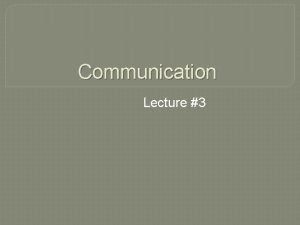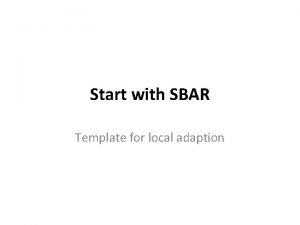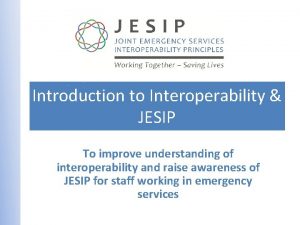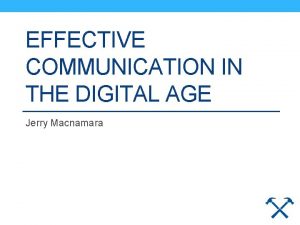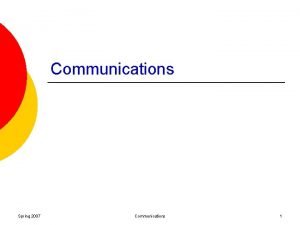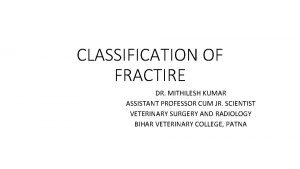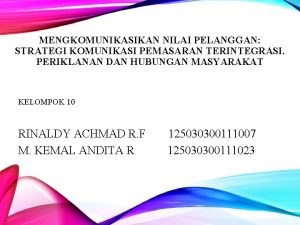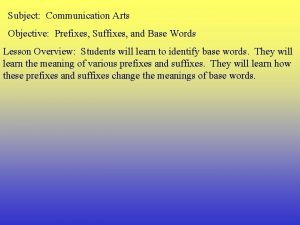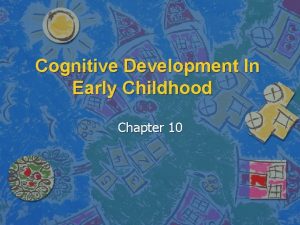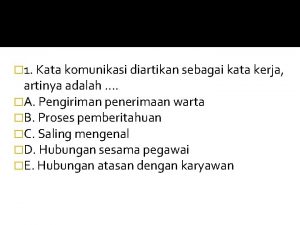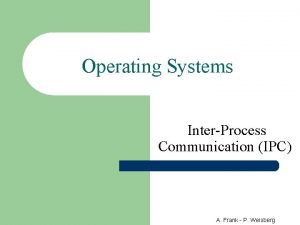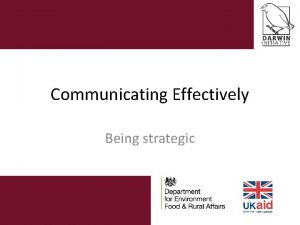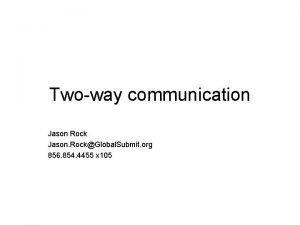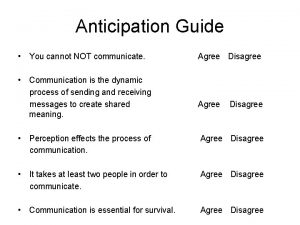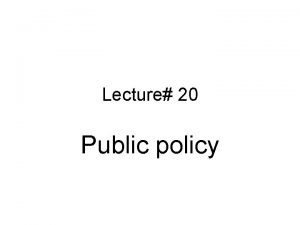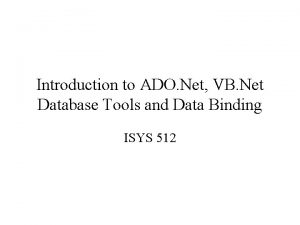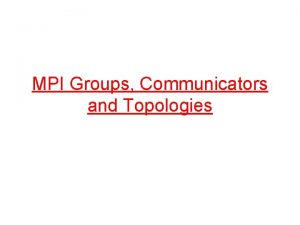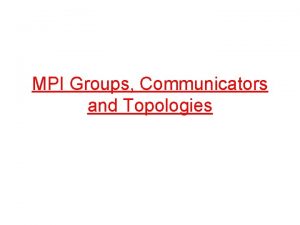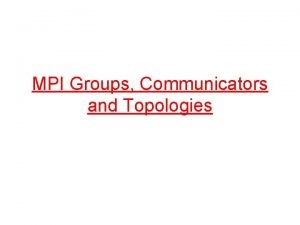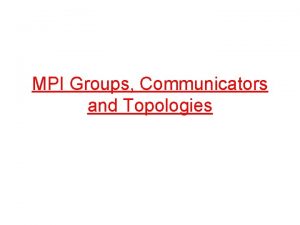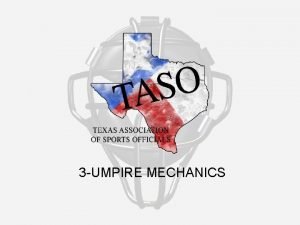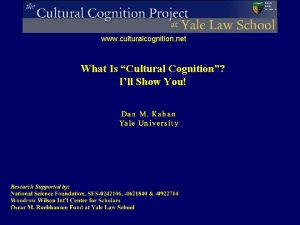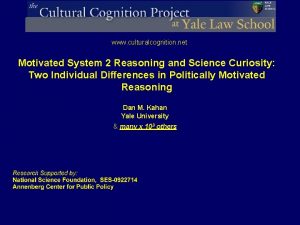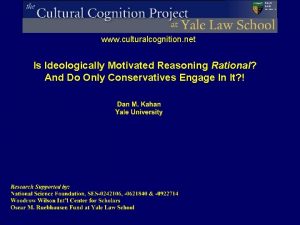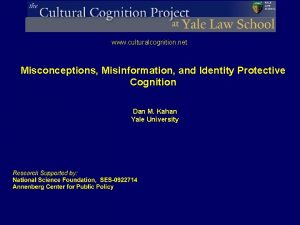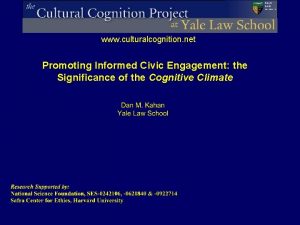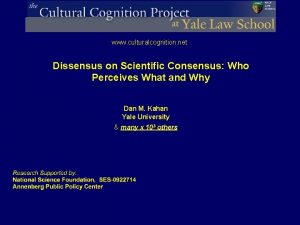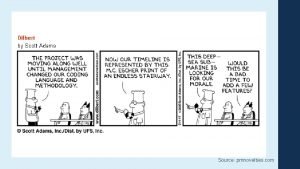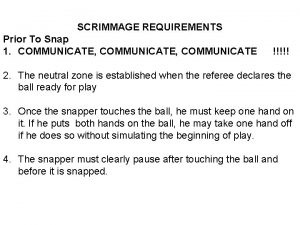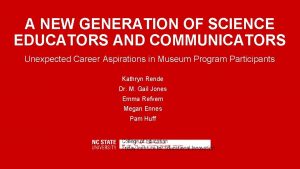www culturalcognition net What Should Science Communicators Communicate












































- Slides: 44

www. culturalcognition. net What Should Science Communicators Communicate About Sea Level Rise? Dan M. Kahan Yale University

The Science Communication Problem 1. What the problem isn't: the public irrationality thesis (PIT) 2. What the problem is 3. What to communicate about sea level rise


“How much risk do you believe climate change poses to human health, safety, or prosperity? ” perceived risk (z-score) Greater Lesser U. S. general population survey, N = 1, 500. Scale 0 (“no risk at all”) to 10 (“extreme risk”), M = 5. 7, SD = 3. 4. CIs reflect 0. 95 level of confidence. source: Kahan, D. M. , Peters, E. , Wittlin, M. , Slovic, P. , Ouellette, L. L. , Braman, D. & Mandel, G. The polarizing impact of science literacy and numeracy on perceived climate change risks. Nature Clim. Change, 2, 732 -35 (2012).

“How much risk do you believe climate change poses to human health, safety, or prosperity? ” PIT prediction: Science Illiteracy & Bounded Rationality Greater perceived risk (z-score) High Sci. litearcy/System 2 (“slow”) Low Sci. litearcy/System 1 (“fast”) Lesser U. S. general population survey, N = 1, 500. Scale 0 (“no risk at all”) to 10 (“extreme risk”), M = 5. 7, SD = 3. 4. CIs reflect 0. 95 level of confidence. source: Kahan, D. M. , Peters, E. , Wittlin, M. , Slovic, P. , Ouellette, L. L. , Braman, D. & Mandel, G. The polarizing impact of science literacy and numeracy on perceived climate change risks. Nature Clim. Change, 2, 732 -35 (2012).

“How much risk do you believe climate change poses to human health, safety, or prosperity? ” perceived risk (z-score) Greater Risk Lesser Risk PIT prediction actual variance low high Science literacy actual variance low high Numeracy U. S. general population survey, N = 1, 500. Scale 0 (“no risk at all”) to 10 (“extreme risk”), M = 5. 7, SD = 3. 4. CIs reflect 0. 95 level of confidence. source: Kahan, D. M. , Peters, E. , Wittlin, M. , Slovic, P. , Ouellette, L. L. , Braman, D. & Mandel, G. The polarizing impact of science literacy and numeracy on perceived climate change risks. Nature Clim. Change, 2, 732 -35 (2012).

The Science Communication Problem 1. What the problem isn't: the public irrationality thesis (PIT) 2. What the problem is 3. What to communicate about sea level rise

The Science Communication Problem 1. What the problem isn't: the public irrationality thesis (PIT) 2. What the problem is: motivated reasoning 3. What to communicate about sea level rise

Cultural Theory of Risk Perception Key Low Risk High Risk Hierarchy Environment: climate, nuclear hierarchical individualists Guns/Gun Control Gays military/gay parenting hierarchical communitarians Abortion procedure compulsory psychiatric treatment HPV Vaccination Individualism Communitarianism Gays military/gay parenting Abortion procedure egalitarian individualists compulsory psychiatric treatment Environment: climate, nuclear Guns/Gun Control egalitarian communitarians HPV Vaccination Egalitarianism

Source: Kahan, D. M. , Jenkins-Smith, H. & Braman, D. Cultural Cognition of Scientific Consensus. J. Risk Res. 14, 147 -74 (2011).

Cultural Cognition Worldviews Risk Perception Key Low Risk High Risk Hierarchy Environment: climate, nuclear Guns/Gun Control Individualism Communitarianism Environment: climate, nuclear Guns/Gun Control Egalitarianism

Source: Kahan, D. M. , Jenkins-Smith, H. & Braman, D. Cultural Cognition of Scientific Consensus. J. Risk Res. 14, 147 -74 (2011).

Climate Change High Risk (science conclusive) Low Risk (science inconclusive)

Geologic Isolation of Nuclear Wastes High Risk (not safe) Low Risk (safe)

Concealed Carry Laws High Risk (Increase crime) Low Risk (Decrease Crime)

Featured scientist is a knowledgeable and credible expert on. . . Egalitarian Communitarian More Likely to Agree Hierarchical Individualist More Likely to Agree Difference in Likelihood of Agreeing Scientist is “Expert” 60% 40% Climate Change 20% 0 20% 40% 60% 54% 72% 22% Nuclear Power 31% 58% Concealed Carry 61% N = 1, 500. Derived from ordered-logit regression analysis, controlling for demographic and political affiliation/ideology variables. Culture variables set 1 SD from mean on culture scales. CIs reflect 0. 95 level of confidence

Source: Kahan, D. M. , Jenkins-Smith, H. & Braman, D. Cultural Cognition of Scientific Consensus. J. Risk Res. 14, 147 -74 (2011).


The Science Communication Problem 1. What the problem isn't: the public irrationality thesis (PIT) 2. What the problem is: motivated reasoning 3. What to communicate about sea level rise

“How much risk do you believe climate change poses to human health, safety, or prosperity? ” Cultural variance conditional Cultural Variance on sci. literacy/numeracy? perceived risk (z-score) Greater Lesser Egalitarian Communitarian Low Sci lit/numeracy High Sci lit/numeracy Hierarchical Individualist U. S. general population survey, N = 1, 500. Scale 0 (“no risk at all”) to 10 (“extreme risk”), M = 5. 7, SD = 3. 4. CIs reflect 0. 95 level of confidence. source: Kahan, D. M. , Peters, E. , Wittlin, M. , Slovic, P. , Ouellette, L. L. , Braman, D. & Mandel, G. The polarizing impact of science literacy and numeracy on perceived climate change risks. Nature Clim. Change, 2, 732 -35 (2012).

“How much risk do you believe climate change poses to human health, safety, or prosperity? ” PIT prediction: Culture as heuristic substitute perceived risk (z-score) Greater Lesser Egalitarian Communitarian Low Sci lit/numeracy High Sci lit/numeracy Hierarchical Individualist U. S. general population survey, N = 1, 500. Scale 0 (“no risk at all”) to 10 (“extreme risk”), M = 5. 7, SD = 3. 4. CIs reflect 0. 95 level of confidence. source: Kahan, D. M. , Peters, E. , Wittlin, M. , Slovic, P. , Ouellette, L. L. , Braman, D. & Mandel, G. The polarizing impact of science literacy and numeracy on perceived climate change risks. Nature Clim. Change, 2, 732 -35 (2012).

“How much risk do you believe climate change poses to human health, safety, or prosperity? ” Actual interaction of culture & sci-lit/num. . . perceived risk (z-score) Greater High Sci lit/numeracy Egal Comm Low Sci/lit numeracy Egal Comm Low Sci lit/numeracy Low Sci lit/num. Hierarc Individ High Sci lit/numeracy Hierarch Individ Lesser U. S. general population survey, N = 1, 500. Scale 0 (“no risk at all”) to 10 (“extreme risk”), M = 5. 7, SD = 3. 4. CIs reflect 0. 95 level of confidence. source: Kahan, D. M. , Peters, E. , Wittlin, M. , Slovic, P. , Ouellette, L. L. , Braman, D. & Mandel, G. The polarizing impact of science literacy and numeracy on perceived climate change risks. Nature Clim. Change, 2, 732 -35 (2012).

“How much risk do you believe climate change poses to human health, safety, or prosperity? ” Actual interaction of culture & sci-lit/num. . . perceived risk (z-score) Greater High Sci lit/numeracy Egal Comm Low Sci/lit numeracy Egal Comm Low Sci lit/numeracy Low Sci lit/num. Hierarc Individ High Sci lit/numeracy Hierarch Individ Lesser U. S. general population survey, N = 1, 500. Scale 0 (“no risk at all”) to 10 (“extreme risk”), M = 5. 7, SD = 3. 4. CIs reflect 0. 95 level of confidence. source: Kahan, D. M. , Peters, E. , Wittlin, M. , Slovic, P. , Ouellette, L. L. , Braman, D. & Mandel, G. The polarizing impact of science literacy and numeracy on perceived climate change risks. Nature Clim. Change, 2, 732 -35 (2012).

“How much risk do you believe climate change poses to human health, safety, or prosperity? ” POLARIZATION INCREASES as scil-lit/numeracy increases perceived risk (z-score) Greater High Sci lit/numeracy Egal Comm Low Sci/lit numeracy Egal Comm Low Sci lit/numeracy Low Sci lit/num. Hierarc Individ High Sci lit/numeracy Hierarch Individ Lesser U. S. general population survey, N = 1, 500. Scale 0 (“no risk at all”) to 10 (“extreme risk”), M = 5. 7, SD = 3. 4. CIs reflect 0. 95 level of confidence. source: Kahan, D. M. , Peters, E. , Wittlin, M. , Slovic, P. , Ouellette, L. L. , Braman, D. & Mandel, G. The polarizing impact of science literacy and numeracy on perceived climate change risks. Nature Clim. Change, 2, 732 -35 (2012).

The Science Communication Problem 1. What the problem isn't: the public irrationality thesis (PIT) 2. What the problem is: motivated reasoning 3. What to communicate about sea level rise: it’s your team’s issue


Field experiments: Observe & measure

The Science Communication Problem 1. What the problem isn't: the public irrationality thesis (PIT) 2. What the problem is: motivated reasoning 3. What to communicate about sea level rise: it’s your team’s issue



Figuring sea level rise in Florida

Figuring sea level rise in Florida

The Science Communication Problem 1. What the problem isn't: the public irrationality thesis (PIT) 2. What the problem is: motivated reasoning 3. What to communicate about sea level rise: it’s your team’s issue

Figuring sea level rise in Florida






The Science Communication Problem 1. What the problem isn't: the public irrationality thesis (PIT) 2. What the problem is: motivated reasoning 3. What to communicate about sea level rise: it’s your team’s issue


Figuring sea level rise in Florida

The Science Communication Problem 1. What the problem isn't: the public irrationality thesis (PIT) 2. What the problem is: motivated reasoning 3. What to communicate about sea level rise: it’s your team’s issue

Cultural Cognition Cat Scan Experiment Go to www. culturalcognition. net!
 When we communicate verbally we should use
When we communicate verbally we should use People the great communicators
People the great communicators Traits of good communicators
Traits of good communicators Psychological noise in communication
Psychological noise in communication Competent intercultural communicators resist ambiguity.
Competent intercultural communicators resist ambiguity. Utility communicators international
Utility communicators international As a child, which subject of science was your favourite?
As a child, which subject of science was your favourite? How do people communicate
How do people communicate To inform and entertain
To inform and entertain Sbar template
Sbar template 4 main stages of a major incident jesip
4 main stages of a major incident jesip How do people communicate
How do people communicate Site:slidetodoc.com
Site:slidetodoc.com Why communicate
Why communicate Meaning of effective communication
Meaning of effective communication Nici unu
Nici unu Spiral fractire
Spiral fractire Training managers to communicate effectively
Training managers to communicate effectively Suffix of play
Suffix of play Communicating value
Communicating value The very attempt not to communicate communicates something
The very attempt not to communicate communicates something Objects communicate with one another by using
Objects communicate with one another by using Prefix and suffix for communicate
Prefix and suffix for communicate New system communicate let us know
New system communicate let us know Tkam chapter 27-31 summary
Tkam chapter 27-31 summary How dogs communicate
How dogs communicate Persons in lpscs careers must effectively communicate with
Persons in lpscs careers must effectively communicate with How do processes communicate
How do processes communicate Talking aloud to oneself with no intent to communicate
Talking aloud to oneself with no intent to communicate Kata komunikasi diartikan sebagai kata kerja adalah
Kata komunikasi diartikan sebagai kata kerja adalah Ipc in os
Ipc in os How do astronauts communicate with each other
How do astronauts communicate with each other How neurons communicate
How neurons communicate Why communicate
Why communicate Globalsubmit communicate
Globalsubmit communicate You cannot not communicate
You cannot not communicate Communicate information fairly and objectively
Communicate information fairly and objectively Public policy definition
Public policy definition Achmed lach net ich krieg mein tach net
Achmed lach net ich krieg mein tach net Ado.net vb.net
Ado.net vb.net Science spot net
Science spot net T. trimpe 2011 http //sciencespot.net/
T. trimpe 2011 http //sciencespot.net/ Social science vs natural science
Social science vs natural science Natural science branches
Natural science branches Natural science vs physical science
Natural science vs physical science
